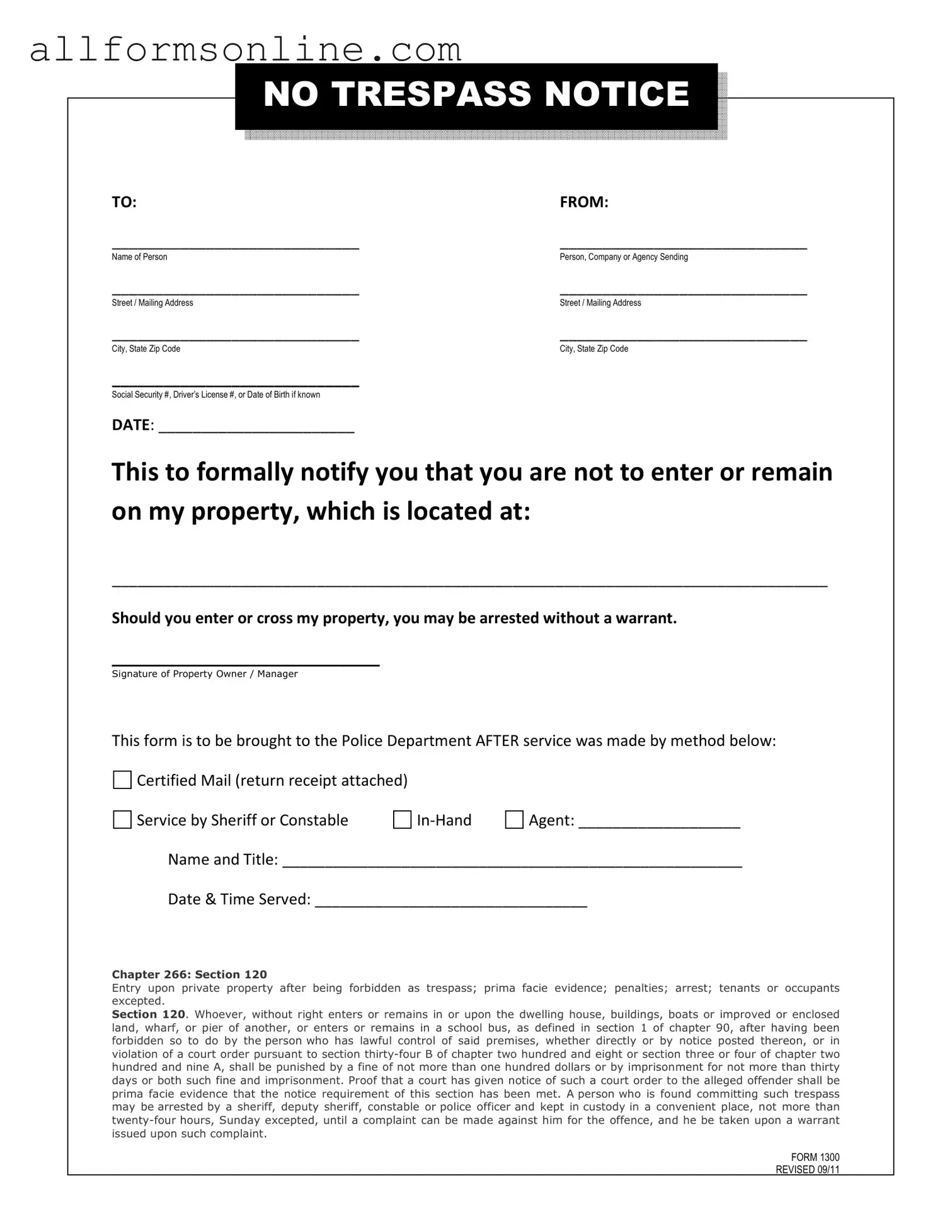What is a No Trespassing Letter?
A No Trespassing Letter is a formal document that informs someone they are not allowed to enter or stay on your property. It serves as a clear warning and can help protect your rights as a property owner.
When should I use a No Trespassing Letter?
You should use a No Trespassing Letter if someone is repeatedly entering your property without permission. This letter acts as a legal notice and can deter unwanted visitors from trespassing in the future.
How do I fill out the No Trespassing Letter form?
To fill out the form, provide your name and address as the property owner. Then, enter the name and address of the person you are notifying. Specify the date and include the location of your property. Finally, sign the letter to make it official.
What happens if the person ignores the No Trespassing Letter?
If the person ignores the letter and enters your property, you may contact local law enforcement. The letter serves as evidence that you have notified them of the trespassing, which can support any legal action you may take.
How should I deliver the No Trespassing Letter?
You can deliver the letter in several ways. Common methods include sending it via certified mail with a return receipt, having it served by a sheriff or constable, or delivering it in person. Make sure to keep a record of how and when you delivered the letter.
Is a No Trespassing Letter legally binding?
Yes, a No Trespassing Letter is legally binding. It notifies the recipient that they are not allowed on your property. If they trespass after receiving the letter, you may have grounds to involve law enforcement.
Can I use a No Trespassing Letter for any type of property?
Yes, you can use a No Trespassing Letter for any type of property you own, whether it’s residential, commercial, or vacant land. The letter applies as long as you have the legal right to restrict access to that property.
What information should I include in the No Trespassing Letter?
Include your name, address, and the date. Clearly state that the recipient is not allowed on your property. Provide the exact address of the property and any other relevant details that clarify the boundaries of your property.
Can I revoke a No Trespassing Letter?
Yes, you can revoke a No Trespassing Letter at any time. To do this, simply inform the individual in writing that the letter is no longer in effect. Keep a copy of this revocation for your records.
What should I do after sending the No Trespassing Letter?
After sending the letter, monitor the situation. If the individual continues to trespass, gather evidence and contact local law enforcement. The letter can help support your case if legal action becomes necessary.
